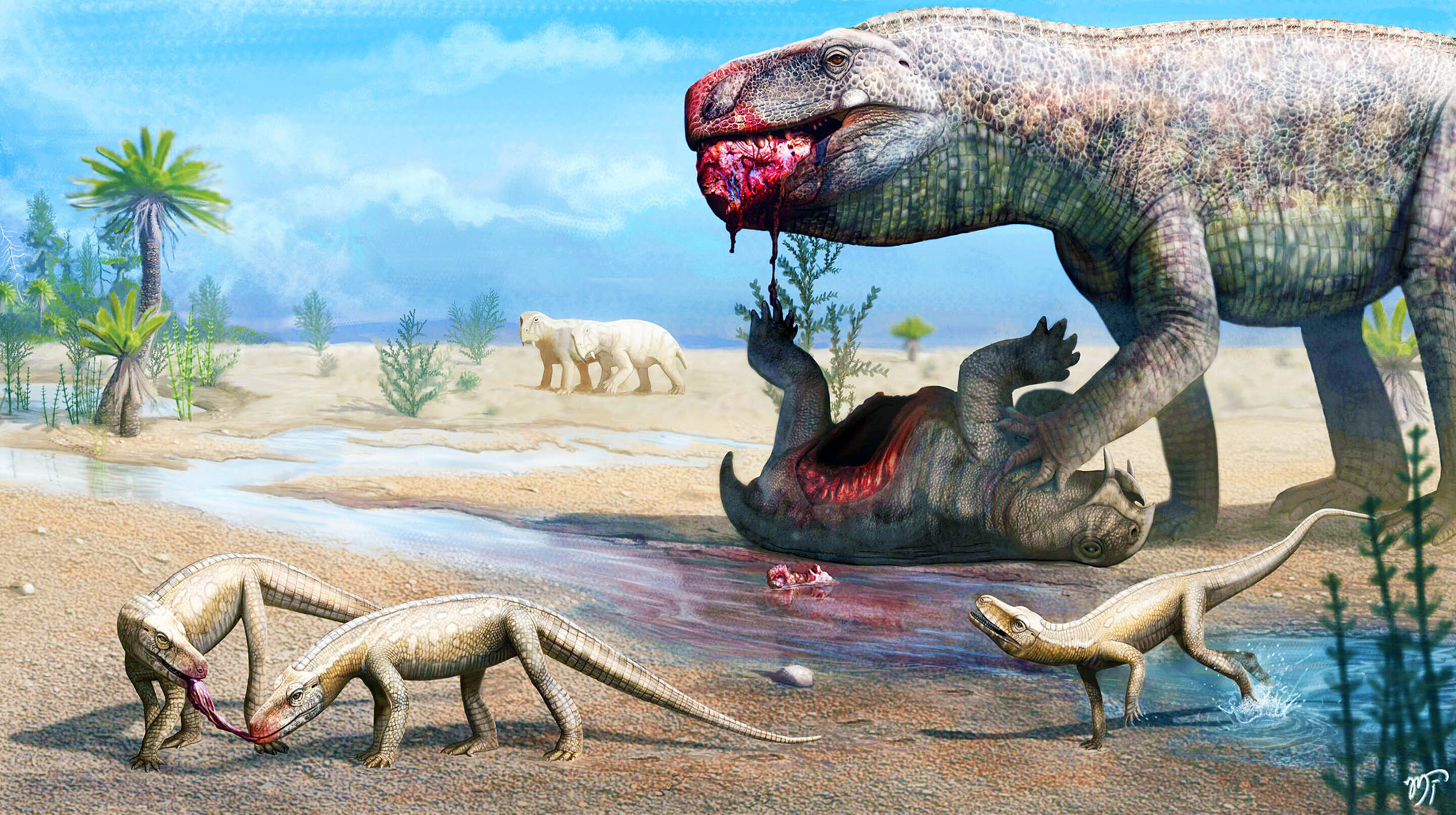The history of the Earth is full of amazing creatures, some of which, like pseudosuchia, still baffle experts.
One such species is the new predatory reptile species recently discovered in the heart of Brazil, a remarkable addition to the Triassic stories.
This latest find sheds light on an ancient lineage of crocodile-like reptiles known as pseudosuchia, Parvosuchus aurelioiNow let’s go on a journey to truly understand these “false crocodiles” and their role in our planet’s past.
Triassic stories about pseudosuchians
Before dinosaurs came along, pseudosuchians strutted across the face of the Earth for all to see. They lived on our planet approximately 252 to 201 million years ago, during the Triassic Period, and were among the most common four-legged reptiles of that time.
Their existence is best described by those at the top of the food chain: the enormous carnivorous pseudosuchia.
Gracilisuchidae, smaller relatives of these top predators, also lived during this period, and traces of them have been found in regions such as China and Argentina.
The hero of our story, Rodrigo Müller, a scientist from Brazil, has added color to our understanding of pseudosuchians. Let’s take a closer look.
Pseudosuchians were a fascinating clan
The Pseudosuchia, or “false crocodiles,” were a diverse clade of archosaurs, relatives of modern birds and crocodiles and their extinct relatives.
They flourished, diversified and adapted, displaying a range of sizes, shapes and lifestyles as varied as the environments they lived in. They can be divided into a few notable groups:
- Aetosauria: Heavily armored, herbivorous creatures, best known for their broad, flat bodies and short legs.
- Ornithosuchidae: The “bird crocodiles”, an interesting mix of bird and crocodile features, were probably active predators.
- Rauisuchidae: The true titans of their time: large predators with sturdy limbs and a fearsome bite.
- Crocodilians: The ancestors of modern crocodiles, which were initially small and land-dwelling, but later developed semi-aquatic abilities.
Anatomy of the Ancient Adaptability
Pseudosuchians displayed a stunning array of anatomical features that epitomized their adaptability and evolutionary success. Their skull shapes and teeth indicated their diverse diet and lifestyle.
Predators had sharp, serrated teeth that allowed them to tear meat, while herbivores had flatter teeth that allowed them to grind plant material.
Likewise, their limb structures differed dramatically based on their lifestyle. For example, rauisuchids had strong, pillar-like limbs that suited their ground-dwelling, predatory lifestyle. On the other hand, early crocodylomorphs had more delicate limbs, suited for both land and water.
Another important feature seen in many pseudosuchians, particularly aetosaurs, was the presence of extensive armor made up of bony plates, or osteoderms. This armor not only provided protection, but may have also played a role in thermoregulation.
Triassic ecosystem and pseudosuchian rolls
Pseudosuchians not only survived, but thrived in different ecological niches. Species like the rauisuchids reigned supreme as the dominant land predators, while aetosaurs served as the primary herbivores of their ecosystems. Some pseudosuchians even enjoyed an omnivorous or generalist diet.
Sadly, most pseudosuchians disappeared at the end of the Triassic, succumbing to a cocktail of volcanic activity, climate change, and competition with emerging archosaurs, such as early dinosaurs.
However, the crocodile lineage persisted and evolved into the variety of crocodiles we see today.
New Brazilian discovery: Parvosuchus aurelioi
Let’s return to our recent discovery by Rodrigo Müller. He found a new species of gracilisuchid from a specimen in the Santa Maria Formation in Brazil.
The partial skeleton is approximately 237 million years old and consists of a complete skull, 11 vertebrae, part of the pelvis and partially preserved limbs.

Baptized Parvosuchus aurelioiThe name is a tribute to amateur paleontologist Pedro Lucas Porcella Aurélio, who stumbled upon the fossil material by chance.
This small crocodile-like animal is estimated to have been less than a meter long. It had long, slender jaws full of pointed, backward-curving teeth.
This fascinating find is the first time such a species has been confirmed in Brazil, highlighting the incredible diversity among pseudosuchians during the Triassic.
From the Triassic to modern times
This journey through the Triassic and the world of the pseudosuchians is a testament to the Earth’s rich and diverse history.
The discovery of Parvosuchus aurelioi in Brazil marks a major milestone in unraveling the vast legacy of these ancient reptiles. It reminds us of the magnificent biodiversity that once painted the landscapes of our planet, with creatures both large and small.
The knowledge gained from studying pseudosuchia provides insight into the ecological past of our world and demonstrates the adaptability and resilience of life.
As we continue to excavate the archives of Earth’s past, each new discovery, such as Parvosuchus aurelioibrings us one step closer to understanding the beautiful tapestry of life and how it has evolved over millions of years.
The full study was published in the journal Scientific reports.
—–
Like what you read? Subscribe to our newsletter for engaging articles, exclusive content and the latest updates.
Check us out on EarthSnap, a free app from Eric Ralls and Earth.com.
—–
